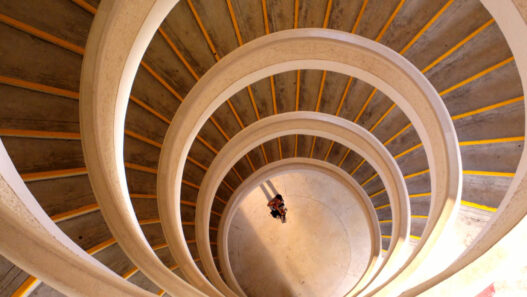Class 6: Practice the 8 technique meditations
Hi. Welcome back to the Wheel of Life series, online retreat, and today we’re going to do, for session six. I’m sorry (laughs) we’re going to do a meditation. And during this online retreat we’re discussing three kinds—actually four kinds—of meditation you can do to warm-up for your real meditation. And of course we did the seven preparation steps already.
[su_icon icon=”icon: link” color=”#ff1259″ size=”20″ shape_size=”12″ url=”https://www.youtube.com/watch?v=niW52ROXBMc&t=4s” target=”blank”]Video[/su_icon]Now today we’re going to do what’s called “the eight technique meditations.” And these meditations help you improve your meditation technique. They’re not actually meditations themselves. It’s like we are just building a stronger microscope, but we’re not looking at anything with the microscope.
So these meditations are kind of exciting. And kind of sexy. But, please, they are not real meditations. You are just sharpening the knife; you are not cutting the fruit yet. Cutting the fruit is real meditation. Sharpening the knife is just improving your concentration. If you want to say it a different way, you can say these eight technique meditations help you reach shamatha. And shamatha literally means “peacefulness,” but it means the kind of perfect focus you’re going to have to develop if you want to see emptiness later.
[su_icon icon=”icon: link” color=”#ff1259″ size=”20″ shape_size=”12″ url=”https://www.youtube.com/watch?v=niW52ROXBMc&t=2m39s” target=”blank”]Video[/su_icon]So personally, in my daily meditation, I mix up different preliminaries. Some days I feel like doing the seven preliminaries because I’d like to start with my teacher. And that’s a very powerful karma for starting your meditation. But sometimes before meditation, I like to use these eight technique meditations. Sometimes I want to call them “getting quiet” meditations.
And the goal of these eight is to get quieter, and quieter, and quieter. And then you shift to the real meditation. So in session six, today, we’re just going to practice those eight “getting quieter technique meditations,” and then in tomorrow’s segment- session seven—I’ll show you how to use those eight to get into your meditation, and then do a real meditation. The picture that we use for these eight is a picture of the sky and the sea. And you’ll understand that more as we go through these meditations.
[su_icon icon=”icon: link” color=”#ff1259″ size=”20″ shape_size=”12″ url=”https://www.youtube.com/watch?v=niW52ROXBMc&t=4m52s” target=”blank”]Video[/su_icon]These are traditionally divided into two sets of four and four. And the nickname for them in Tibetan Buddhism is sam suk (BSAM GZUGS), sam (BSAM) is short for samten (BSAM GTAN), and samten, like dhyana in Sanskrit, and the word chan or zen comes from that. So actually all meditations are dhyana, but the first four are, together, traditionally they are called samten shi (BSAM GTAN BZHI)—”the four meditation levels.”
And as you know if you studied the Lion’s Dance, these are divided into cause meditations and result meditations. “Cause meditation” means if you do these four samtens or dhyanas over and over in this life—many, many, many times—when you die, you could be born into what we call the form realm. Form is also a nickname, and it means the realm of beings who look like superheroes. So in that realm everybody looks like Iron Man, or Thor, or Wonder Woman. They have very, very beautiful forms, so it’s called form realm meditation.
[su_icon icon=”icon: link” color=”#ff1259″ size=”20″ shape_size=”12″ url=”https://www.youtube.com/watch?v=niW52ROXBMc&t=7m9s” target=”blank”]Video[/su_icon]Then we go to the second set of four. So, the whole eight are called sam suk. The sam (BSAM) means the samten—four kinds of meditation to reach the form realm rebirth of Thor and Iron Man. And to call the second set suk (GZUGS) is very confusing, because suk means “physical form.” But really those realms are suk-me (GZUGS MED)—formless realms. And you are born without any gross physical body there, if you do these four meditations.
Whether you become poor or whether you become a person who is just a brain and no body, you are still in samsara, and there’s a lot of suffering there. So we don’t do these meditations to reach those two realms. We use these meditations to get quieter, and quieter, and quieter so we can do a higher meditation. So when you say “we’re trying to reach shamatha,” it doesn’t mean peace in the sense of Nirvana; it means peace in the sense of perfect concentration. And perfect quiet.
[su_icon icon=”icon: link” color=”#ff1259″ size=”20″ shape_size=”12″ url=”https://www.youtube.com/watch?v=niW52ROXBMc&t=9m22s” target=”blank”]Video[/su_icon]So let’s start.
Take your meditation position. Make sure you’re comfortable—don’t start your meditation until you are really comfortable. Stomach is a little bit. Lower abdomen is a little bit pushed in. The perfect way to do that, when you exhale, then push a little extra air out, and that will also prevent problems with too much prana build-up.
Shoulders back, chest out, the hands come back on the legs a little bit. Face is calm. Many of us, when we concentrate, we scowl. So try to concentrate without scowling. I like to play music. When I play sitar, for example, I scowl because I’m concentrating. So during meditation, especially these eight, try to concentrate but don’t scowl. The face is very pleasant, relaxed, little smile.
Now usually we start a meditation by watching our breath for about ten breaths. But it’s traditional—especially in the “Lion’s Dance”—to start this meditation in a completely different way. So before you start the eight, we’re going to listen to any subtle sounds in this room. It might be the sound of a few cars outside, it might be the sound of some family members in your apartment. The sound of a refrigerator is very typical in most houses. In this room right now, at the Sedona College of International Management and the headquarters of ACI, we have air conditioning going right now.
So whatever sound you have available in your place, please put your mind on that sound. I enjoy the image of putting my head on a pillow. When I put my head on my pillow at night, I so enjoy that moment. And the head goes down to the pillow and it stays there. You don’t raise your head, put it back, raise your head, put it back, raise your head … you don’t do that.
So for this sound meditation before we do the eight technique meditations, please relax your mind on that sound in your room like you are putting your head on a pillow and leave it there.
Here we go. Stanley and I will put our minds on the air conditioning. Again, personally I like to time the parts of my meditation. I might do ten breaths on each part or twenty. People ask me, “Isn’t that a distraction, when you think about your breath when you’re supposed to be thinking about the air conditioner?” But if you practice meditation every day, the ten breaths becomes natural to you, and it won’t be a distraction.
Okay, here we go. Try to keep your mind on the sound.
1. Now we’re going to go into the first of the eight technique meditations. And please put your mind on your heartbeat. For me, it feels like I’m in my head and I’m kind of feeling my heart beat in my chest. And I’m not inside the heart, I’m just observing the heart.
If you meditate a lot and if you have a quiet place to meditate, you can follow your heartbeat—the pulse—in your ears. So here we go.
Relax. Don’t rush. Just have fun.
Please remember to push the breath out at the exhale—at the end of the exhale, until your lower abdomen tightens, very slightly—all throughout these meditations.
OK. Let’s focus on our heartbeats, and try not to think of other things. These eight meditations are described as dropping the last level and moving up to the next level. Each level is more quiet than the last level—higher, higher quiet. So you almost consciously say, “I’m going to stop listening to the air conditioner and I’m going to move up to a quieter heartbeat.”
So try to stay on the heartbeat and try not to listen to the air-conditioner anymore. You should feel like you’re getting quieter and quieter.
2. Now we’re going to go even more quiet—the second of the eight technique meditations. Let’s go inside our heart. We will still be listening to the heartbeat, but it will feel like the walls of our little meditation room are beating because we’re inside the heart.
Now the inside of the heart is kind of wet and gooey, but for this meditation you have to imagine that inside the heart is a lovely, elegant meditation room. Sunlight is coming through the windows. You have a very comfortable meditation seat. It’s super quiet, but the walls around you—the heart walls—are beating.
So now drop down from your head and enter your heart. And let’s stay in that more quiet place with the heart beating around us.
3. Now we’ll go to the third technique meditation, the third part of the form realm meditation. And imagine there’s a meditation room at the center of your meditation room. I like to think of it like a very expensive apartment on the top of a tall apartment building. And all the windows are glass, and there’s a room at the center of the apartment. And I go into that room and I close the door.
There’s still some sunlight coming in and it’s still a beautiful, elegant room with good air, but the heart beating in the walls, now it sounds very far away—very faint. Okay, here we go to the meditation room at the center of the heart.
Even more quiet.
4. Now I’d like you to imagine a small table at your side—inside this inner room of the heart. And sitting on that table is a small pot of sugar—white sugar. And you lift off the lid of the sugar pot, and with the third finger of your left hand, you just touch the sugar, slightly. And you lift the finger out and there’s a few grains of sugar on the tip of your finger. Focus on one of those grains of sugar, and then think to yourself, “Oh, I would like to be inside that sugar crystal.” It’s super quiet. It’s also super anonymous—who’s going to find you in the whole room inside a sugar crystal?
In the whole world, in the whole universe, it’s a tiny, tiny, tiny, tiny, little place. “If I go inside there, I’ll be super quiet. No one would ever find me there.” So imagine you are opening a door into the sugar crystal and you kind of squeeze your mind through that little door. Then you’re very surprised.
Inside it’s a third meditation room—kind of large and very comfortable. Light is coming in through the edges of the crystal, and you sit down and meditate inside there. If someone came into your main meditation room at this moment, in your house, how could they ever bother you? You are in a single … it’s like you’re in a single atom in a huge room. So let’s go inside and meditate. Very, very quiet inside—no more heartbeat at all.
5. Now let’s take a challenge. In the fifth of the eight technique meditations, which is the first of the formless realm meditations, we take a challenge. Can you fit the whole Pacific Ocean inside of that sugar crystal? So now you become the Pacific Ocean. You are thousands of miles wide. You’re a few miles deep. You cover a good part of the whole world. And Pacific Ocean—”pacific” means “peaceful.” So you are this deep, peaceful, blue ocean. Totally silent.
6. Let’s go even bigger and broader. Let’s add the whole blue sky to the blue water. This is the picture we used for this meditation. “I am the entire blue sky. And I am the entire blue Pacific Ocean. I stretch from the bottom of the ocean to the top of the sky.” Totally peaceful. Totally calm. What could be more quiet than that?
7. “What if I just turned my whole mind off, like a light?” It’s actually … technically, it’s not possible—but let’s pretend. “I’m going to turn my mind off like a light and this will be more quiet than anything before—like completely unconscious.” Watch your mind. Keep it super quiet—no talking in the mind at all. If a thought comes through, if some random image comes through, if some interruption from the outside comes into the mind, go to it and block it. Tell it to shut up. Push it out of the mind. Here we go.
8. Now we’re going to go to meditation level eight—the highest level of the formless realm meditations, which lead you to the formless realm if you do them a lot in this life. “Now I’m also going to shut up the part of my mind which is watching my mind to see if my mind is thinking about anything.”
“Now if random thoughts or ideas come through my mind, no one will be there to hear them,” which is a deeper quiet place. Nobody even watching. Let’s try.
Now let’s dedicate the meditation—these eight technique meditations—just with a wish in your heart that all the people in the world would find this kind of peace and quiet.
Slowly open your eyes. Take a stretch.










